Parisian Walkways: Rue Saint-Blaise, A Village in Eastern Paris

Just half an hour from the heart of touristic Paris you can be in a historic neighbourhood that still maintains its village feel. Jeffrey T Iverson gets on a bus to Charonne…
After a stirring morning walking the banks of the Seine, gazing on the Eiffel Tower from the Pont des Arts and soaking up the entire history of art at the Musée du Louvre, the beauty of Paris is enough to leave anyone dizzied and breathless. And often it’s precisely when you are a few awe-inspiring sights away from a case of Stendhal syndrome that you find yourself searching for a little park or a quiet café to collect yourself, wishing you could just be transported to the countryside temporarily for a moment of calm. But what if you could? What if it were possible to be whisked away from the busy heart of Paris to a rural haven in only minutes?
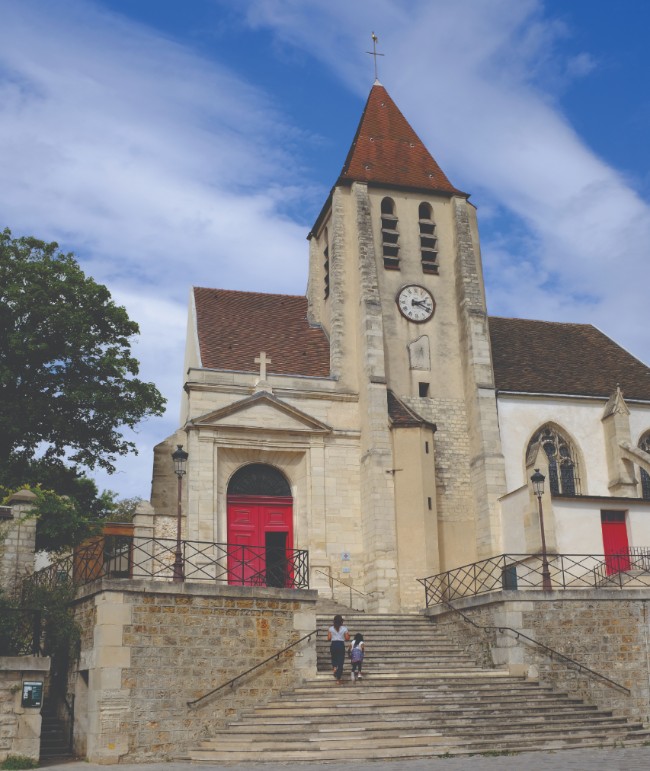
Église Saint-Germain de Charonne. Photo: Jeffrey T Iverson
Impossible? Not quite. Stroll back towards the Seine and step onto the No. 76 bus at the Hôtel de Ville stop across from Île de la Cité. Less than 30 minutes later you arrive at Pyrénées-Bagnolet. There may not seem to be much promise of bucolic bliss at first. Most of the surrounding buildings are tall and modern, like the Philippe Starck-designed Mama Shelter across the street – a chic, hugely popular hotel which opened at 109 rue de Bagnolet in 2008. But continue on a bit further and a vision of green leaves and old stone begins to take shape around the bend. Suddenly you’re standing before an ancient church perched on a hilltop, its Romanesque bell tower flanked by trees, gardens, and a peaceful little cemetery. This is the Église Saint-Germain de Charonne. Dating back to at least the 12th century, this charming church’s courtyard overlooks a broad, cobblestoned plaza that funnels down a gentle slope into a narrow pedestrian street called rue Saint-Blaise.
As you walk downhill, a hush seems to descend over the street and, save for the midday bells of Saint-Germain-de-Charonne, the noise of rue de Bagnolet disappears behind you. There are children playing, colourful boutiques and galleries, and a small lunchtime crowd relaxing on quiet café terraces. Peeking into some of the courtyards on either side, you discover verdant gardens, old fountains and houses resembling country cottages. If this doesn’t resemble any part of Paris you’ve visited, it’s because only a century and half ago it wasn’t Paris. Welcome to the quartier Saint-Blaise, the historic heart of the once independent village of Charonne, and today one of the most secret and transporting neighbourhoods in the French capital.
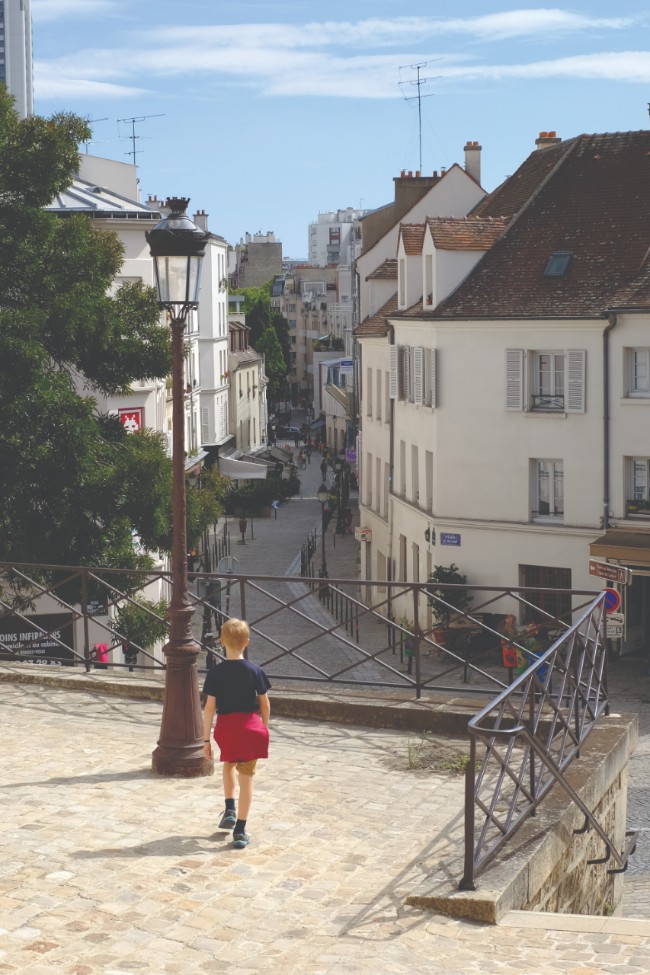
The view down the northwestern end of rue Saint-Blaise from the courtyard of the Église Saint-Germain-de-Charonne. Photo: Jeffrey T Iverson
Back in the 1700s, when maps referred to rue Saint-Blaise as ‘grand-rue Saint-Germain’, Charonne was a village surrounded by orchards and vineyards where bourgeois and aristocrats from Paris built country houses and sent their children to be schooled by nannies in the fresh air. The area was a pastoral playground for prosperous Parisians, with the Château de Bagnolet, the favourite residence of the duchess of Orléans, the wife of the regent of Louis XV, standing not far from here. The château had a vast park where the duchess constructed a number of follies – small ornamental country pavilions – including the Pavillon de l’Ermitage, which still stands 200 metres from rue Saint-Blaise at 148 rue de Bagnolet.
Charonne’s rural character endured even after nearby communities like Belleville began growing, but it too would change after the Revolution. From 600 inhabitants in 1789, the village grew to 16,000 in 1860, the year it was annexed to Paris. In time, the vineyards that had sustained the village made way for small factories and housing for the growing working classes. Unfortunately, those buildings didn’t age well, and a century later many were so dilapidated that, in the 1970s, huge swathes of them all around the southeastern half of rue Saint-Blaise were replaced by high-rise tower blocks. Miraculously, however, the northwestern end of rue Saint-Blaise, the stretch between rue Vitruve and rue de Bagnolet, the heart of the village, was spared from the construction frenzy– and then forgotten. A period of neglect and decay followed for the quartier Saint-Blaise, which finally ended in the 21st century when a vast urban renovation project was launched to revitalise the area. The city cleaned the streets and built new public facilities and tramway stops, and the Église Saint-Germain-de-Charonne got a makeover as well, with six years of sorely needed restorations.
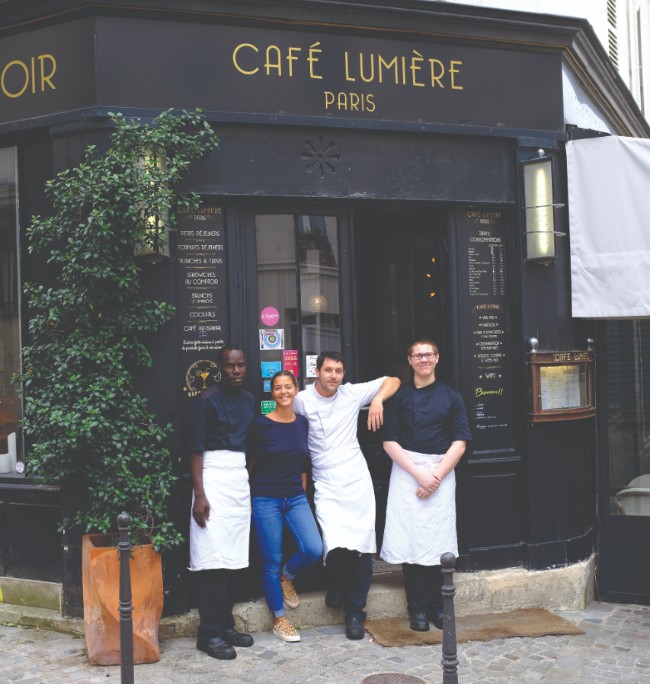
Café Lumière. Photo: Jeffrey T Iverson
When chef Julien Harlee first visited rue Saint-Blaise in 2015, all these projects were wrapping up. “The church, the streets, the schools had all just been renovated,” he recalls. “Everything was so fresh and new it looked like a movie set, except it was real!” And Harlee was no stranger to movie sets – at the time, he and his wife, Caroline Perney, ran a catering business for the film industry. But then they learned that the large, airy corner café at 15 rue Saint-Blaise, with its beautiful wooden bar and original mosaic floor, was for sale. “We fell in love the moment we saw it,” recalls Perney. “It’s this whole authentic atmosphere, the calm, the pedestrianised street, the cobblestones, the ancient church looking over it. On sunny days you actually hear the birds chirping. It’s like being in the countryside without leaving Paris.”
STREETSIDE TERRACE
And so, in the spring of 2015, the couple opened Café Lumière, changing the name from Café Noir. They refreshed the interior with an airy, chic décor, installed a large streetside terrace and created a menu of elegantly updated bistro classics. Given Saint-Blaise’s somnolence, the investment might have looked risky.
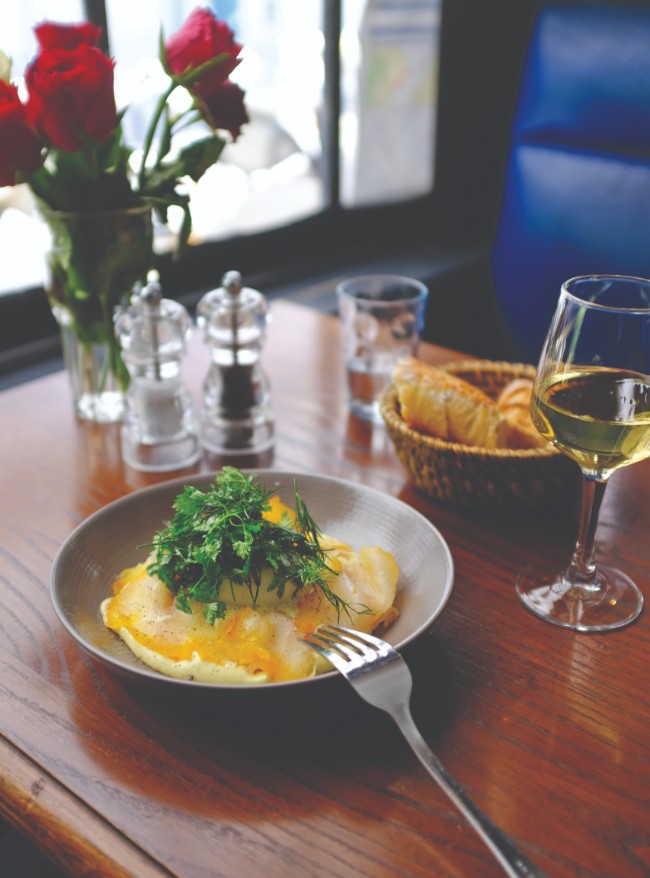
Elegant bistro classics at Café Lumière. Photo: Jeffrey T Iverson
“This is something of a quartier secret,” says Harlee. “Rue Saint-Blaise is far less trodden than the other famous streets of the capital, but that just means it’s still primarily frequented by locals and those in the know, which helps create this relaxed atmosphere we love.” He and his wife soon realised that there were enough film production agencies, architecture firms and schools to keep the restaurant full at lunchtimes.
At weekends, père Rémi, the priest of Saint-Germain-de-Charonne, began coming by with his congregation for a meal after Mass, or for post-baptism or wedding apéritifs.
“There is a very vibrant vie de quartier,” he says. “It’s a real village life here!”
For Guillaume Poitoux, founder of the estate agency La Commune, which opened this year at 20 rue Saint-Blaise, that spirit is the quartier’s charm. “Everyone here feels attached to their neighbourhood,” he says. “And what’s fantastic is that there is real social diversity, yet everyone lives in a very integrated way. I believe the reason is the history of volunteering and community outreach, with associations of all kinds, from gardening groups to after-school programmes. That creates a strong social fabric, even though you have people living in subsidised housing and others living in expensive lofts on the same beautiful street.”
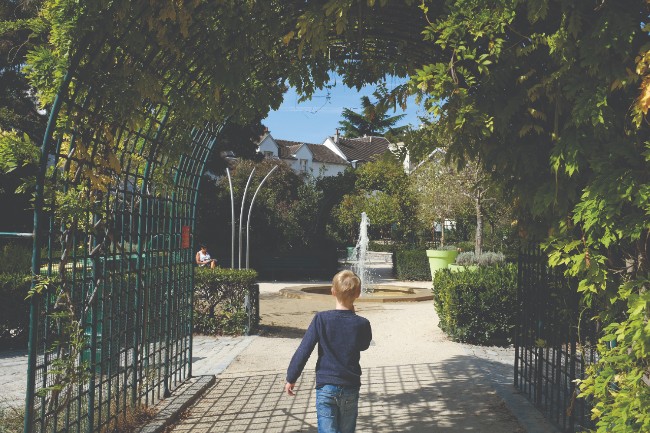
The tranquil gardens of the square des Grès. Photo: Jeffrey T Iverson
Poitoux sees it as La Commune’s role to help ensure that this healthy balance is maintained. While they often deal in exceptionally stylish (and expensive) eastern Paris apartments converted from former workshops or other atypical spaces, they also offer local associations the use of their offices as a meeting place, and donate three per cent of their annual sales to the Fondation Abbé-Pierre to house people in need.
Whatever the reason, rue Saint-Blaise’s allure has clearly grown in recent years, as doctors, therapists, chiropractors and yoga teachers have moved their practices here, and chefs and young entrepreneurs have begun to open restaurants and boutiques. “The street was already attractive, but it’s true that today the businesses are changing and are evolving towards higher and higher levels of quality,” he adds.
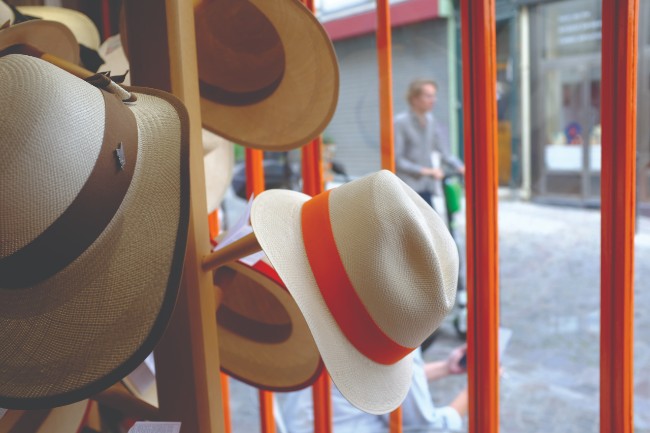
Panama hats at De Punta en Blanco. Photo: Jeffrey T Iverson
Take Marina Gutiérrez-Berga. Since 2002, this former archaeologist from Ecuador has worked in the wholesale business selling Panama hats, a legendary chapeau with deep ties to France. (The Panama hat burst onto the international stage at the Exposition Universelle of 1855 in Paris, when it was presented by Philippe Raimondi, a Frenchman who lived in Central America.) Having built a reputation for the unmatched quality of her hats, Marina founded her own brand in 2015, De Punta en Blanco, at 14 rue Saint-Blaise. She now works directly with craftsmen and women in Ecuador to produce a line of hats Marie Claire magazine called “chic, timeless and fairtraded!”.
Meanwhile, just across the street, at No. 13, another lover of ancestral savoir-faire opened a concept store this year. Ophélia Ben Messaoud created Le Souk de Paname as both a relaxing tearoom and a celebration of Berber craftsmanship, updating traditional Moroccan baskets, rugs and other home décor items with contemporary colours and design. Similarly, Caroline Pajot, at No. 11, imports African Dogon beads and Baroque pearls from La Réunion to create a line of elegant, modern jewellery.
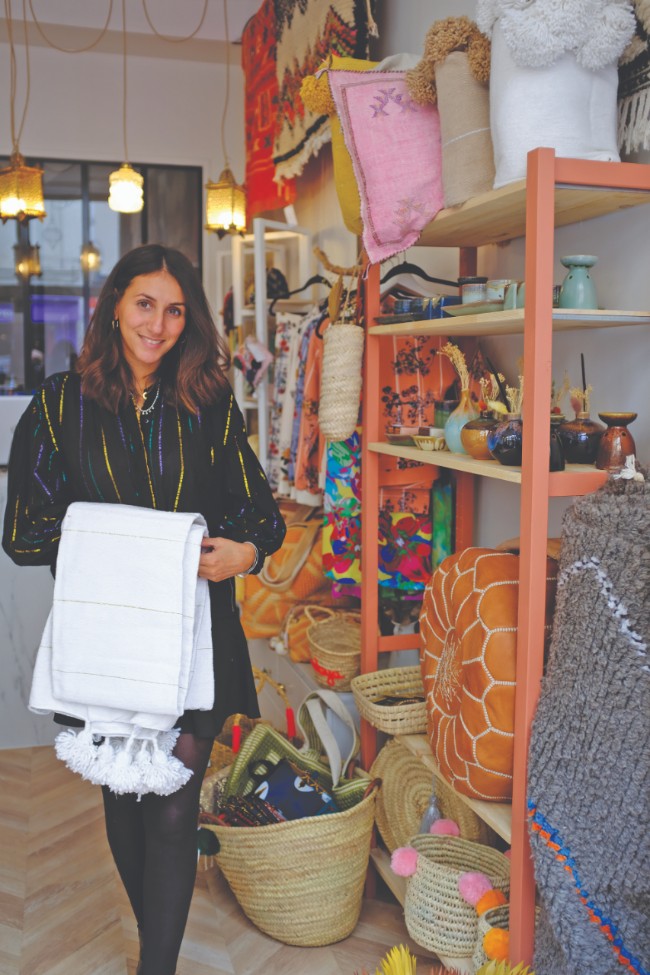
Ophélia Ben Messaoud created Le Souk de Paname as a tearoom and store. Photo: Jeffrey T Iverson
A little further up the street, you can visit two addresses dedicated to artists of another breed. In 2017, three friends with a common passion for street art decided to launch Galerie Lithium at 6 rue Saint-Blaise, in the part of Paris where the genre was born. Today, their exhibitions of both founding fathers and young European newbies are always colourful, joyous affairs, and their vernissages are attended by professionals and aficionados alike.
Their secret? “It’s about generosity,” says co-founder Alain Alvarez. “We want to offer a feast for the eyes, to connect with people, and thus recreate in our gallery the spirit of the artists in the street.”
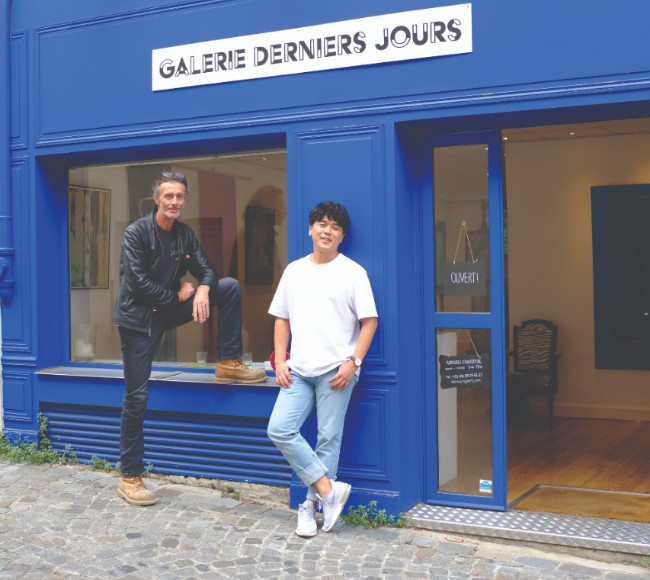
Galerie Derniers Jours. Photo: Jeffrey T Iverson
Also in 2017, across the street at No. 5, photographer Laurent Zylberman and collector Piritta Sorsa founded Galerie Derniers Jours to bring a more social dimension to the traditional art gallery.
“Artists are people who have an energy to share which doesn’t pass by the conventional channels of communication, but takes the form of a painting, a sculpture, a song,” says Zylberman. “So we need places for them to be seen, admired and heard.” The couple dedicated their first exhibition to A P Korenberg, a brilliant and unjustly forgotten local artist who hadn’t shown his work in 20 years. As Zylberman puts it: “There is a place for a gallery in a neighbourhood; it has a role to play.”
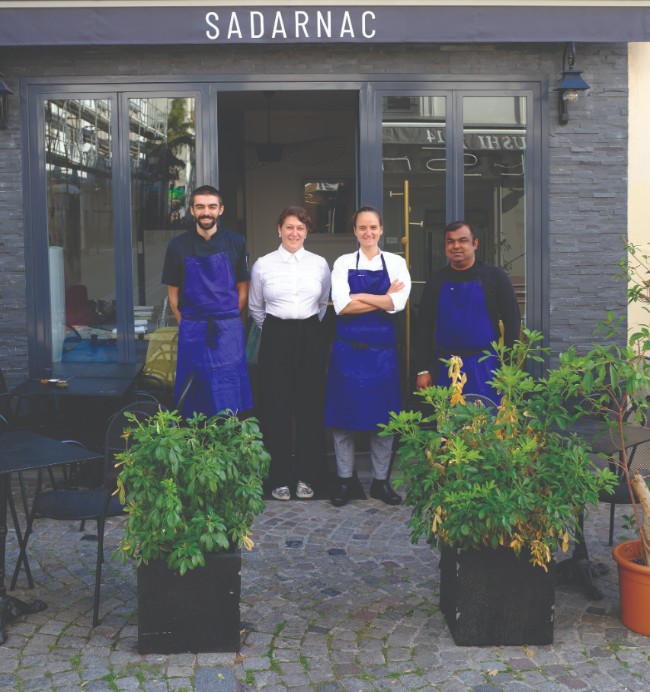
Sadarnac restaurant. Photo: Jeffrey T Iverson
In a similar spirit, last year Lise Deveix opened her gastronomic restaurant Sadarnac at 17 rue Saint-Blaise, inspired by a desire to bring affordable high-end fare to a historically working class area. The French fine-dining bible Gault et Millau named her one of their four young talents of 2018, but she insists that her cuisine isn’t the only draw.
“It’s the calm here that attracts people,” she says. “When you live and work in Paris in constant noise, this calm is precious. People arrive here now with a whole programme in mind. They come on Saturday to eat a fine, relaxing lunch, then go for a stroll through the neighbourhood.” They explore the cobblestones, pause in the tranquil gardens of the square des Grès (around the corner on rue de Vitruve), and visit Saint-Germain-de-Charonne and its ancient, verdant cemetery. They wander up rue de Bagnolet to visit the Pavillon de l’Ermitage, the last vestige of the Château de Bagnolet, and perhaps continue to discover the delightful housing estate built in the early 1900s on the heights of Porte de Bagnolet, known as La Campagne à Paris – the countryside in Paris. “Rue Saint-Blaise has become a destination again,” says Deveix. Indeed, it would seem that the clock has been turned back, and the village of Charonne is a pastoral playground anew.
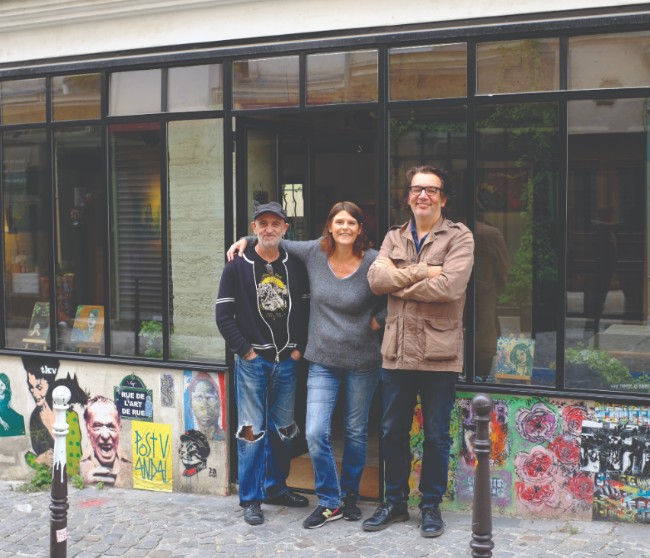
Galerie Lithium. Photo: Jeffrey T Iverson
BOUTIQUES, GALLERIES AND RESTAURANTS
GALERIE DERNIERS JOURS: 5 rue Saint-Blaise, Tel. +33 (0)6 85 07 63 32
Founded by a globetrotting photographer and an economist/art collector, this innovative gallery brings a social dimension to an avarice-fuelled art market. Offering a platform for brilliant artists whose remote locations or reclusive nature are hurdles to exhibiting their work, the gallery presents paintings, photography and prints from around the world, from Finland to Korea to Bolivia.
GALERIE LITHIUM: 6 rue Saint-Blaise, Tel. +33 (0)6 72 71 88 31
At a time when street art is sold in posh Champs-Élysées auction houses, Lithium is earning a reputation as a gallery representing the true street art’s spirit of freedom and generosity. With a passion for both the genre’s history and future, the gallery exhibits street art’s founding fathers (Jérôme Mesnager, Jean Starck) and the new generation across France and Europe (Tona,TKV, Olivia Paroldi).
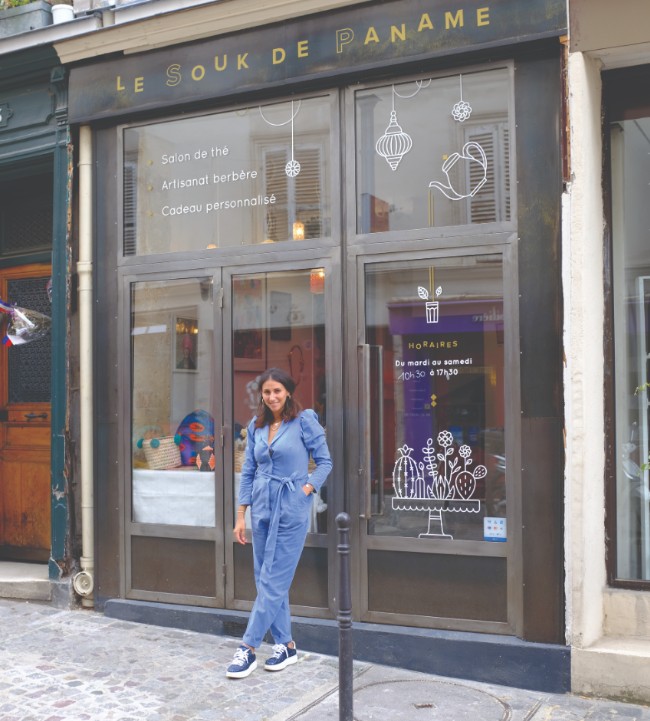
Le Souk de Paname. Photo: Jeffrey T Iverson
LE SOUK DE PANAME: 13 rue Saint-Blaise, Tel. +33 (0)6 51 00 05 07
This concept store’s name (a souk is an Arab bazaar and Paname is a nickname for Paris) perfectly describes the France-meets-North- Africa designs you’ll find inside. Founded by a lover of interior design and Berber craftsmanship, the boutique abounds with chic baskets, pillows, rugs, blankets and other home décor items that marry modern tastes with the true savoir-faire of Moroccan craftspeople.
DE PUNTA EN BLANCO: 14 rue Saint-Blaise, Tel. +33 (0)1 53 27 79 13
Founded by an Ecuadorian archaeologist, De Punta en Blanco (‘dressed to the nines’) is a shop dedicated to the Ecuadorian toquilla straw hat, also known as the Panama hat. In France, it has been fashionable since the days of Napoleon III, and is traditionally worn by spectators at the French Open. The finest in Paris are to be found in this charming shop (which offers stylish hats for winter too).
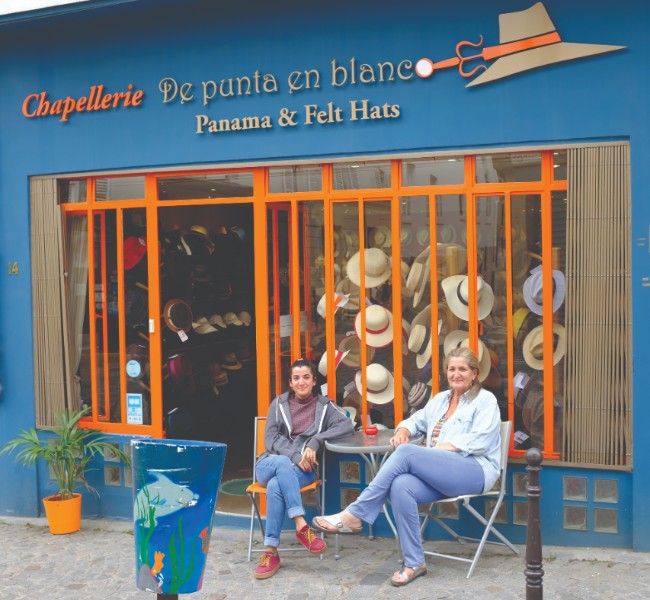
De Punta En Blanco. Photo: Jeffrey T Iverson
CAFÉ LUMIÈRE: 15 rue Saint-Blaise, Tel. +33 (0)9 50 58 76 86
The husband and wife team behind Café Lumière (which used to be called Café Noir) injected a dose of light and modernity into this historic neighbourhood bistro while preserving its lovely curving wooden bar and turn-of-the-century tiled floor. Whether you’re inside or on the tranquil terrace, it’s the perfect spot to take in the rue Saint-Blaise atmosphere over a glass of good wine and delicious fresh cuisine.
SADARNAC: 17 rue Saint-Blaise, Tel. +33 (0)1 72 60 72 06
After sharpening her knives at the legendary Relais Louis XIII, then developing her creativity in the cauldrons of Akrame in Paris and Hong Kong, chef Lise Deveix opened her first gastronomic restaurant here in 2018. Lise’s passion for exquisite French produce and cooking techniques shines in this elegant, relaxing, reasonably priced restaurant, named after her grandparents’ Lozère farm.
From France Today magazine
Share to: Facebook Twitter LinkedIn Email
Leave a reply
Your email address will not be published. Required fields are marked *



